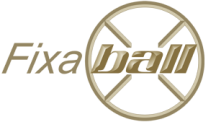Collezione: Machine Taps
Metric and Imperial Machine/ Hand Taps for Engineers, ISO 529/ BS 949. All sizes available.
Fixaball sells all diameters of metric, UNC and UNF machine/ hand taps for threading metal holes
Machine/ Hand Taps
Machine/ Hand Taps are used to create a thread in a pre-drilled hole so that a fastener with the same size/ type of thread can be screwed into it to secure a component/ part. they should be used with a suitable lubricant for better quality threads and to prolong the life of the tap.
1st/ Taper Taps
Taper tap, also known as, 'starter taps' or ,'1st taps', have a longer/ larger champfered end to ease the forming tool through the pre drilled hole. The taper is so to ease a tap better into an untapped hole. eg. Using a bottoming tap 1st would damage the first threads and possibly the thread at the start of the hole.
2nd/ Intermediate Taps
2nd taps are intermediate taps which assist in aligning and starting of the tap into an untapped hole.
3rd/ Bottoming Taps
A bottoming, or, 'plug', tap has no tapered, front edge. Instead it's tip is ground to a cutting edge meaning that it can create a thread to the bottom of a blind hole.
Metric Threads
Metric Coarse threads are in Millimetre (mm/ 1000ths of a metre) units and were developed to simplify the imperial systems. Europe moved to this system but the Americans choose Imperial as their default. A coarse thread has less helical coils per mm and a metric fine threads has more. A Coarse thread (most common/ standard thread) is used for heavier loads and fine is used for lighter loads prone to vibrations.
Imperial - Unified Thread Standards.
The basic American standards for fastening screw threads as agreed upon by standard bodies of Canada, the United Kingdom, and the United States.
Unified National (UN)
Unified National Coarse (UNC)
Unified National Fine (UNF)
Image is for illustrative purposes only.
-
Metric 1st Tapered Machine Taps HSS Standard Thread Osborn
Produttore:Metric - TapsPrezzo di listino Da £9.26 GBPPrezzo di listino£0.00 GBPPrezzo scontato Da £9.26 GBP -
Metric 2nd Intermediate Machine Taps HSS Standard Thread Osborn
Produttore:Metric - TapsPrezzo di listino Da £9.26 GBPPrezzo di listino£0.00 GBPPrezzo scontato Da £9.26 GBP -
Metric Fine Machine Taps HSS Osborn Quality 1st 2nd 3rd
Produttore:Metric - TapsPrezzo di listino Da £12.64 GBPPrezzo di listino£0.00 GBPPrezzo scontato Da £12.64 GBP -
Metric Machine Taps HSS Osborn Quality 1st 2nd 3rd
Produttore:Metric - TapsPrezzo di listino Da £9.26 GBPPrezzo di listino£0.00 GBPPrezzo scontato Da £9.26 GBP -
Metric Machine Taps HSS Osborn Quality 3 Piece Set
Produttore:Metric - TapsPrezzo di listino Da £21.80 GBPPrezzo di listino£0.00 GBPPrezzo scontato Da £21.80 GBP -
Metric Machine Taps HSS Osborn Quality 3rd Bottom
Produttore:Metric - TapsPrezzo di listino Da £9.26 GBPPrezzo di listino£0.00 GBPPrezzo scontato Da £9.26 GBP -
UNC Machine Hand Taps HSS Quality Right Hand
Produttore:UNC - TapsPrezzo di listino Da £11.21 GBPPrezzo di listino£0.00 GBPPrezzo scontato Da £11.21 GBP -
UNF 1st Tapered Machine Hand Taps HSS Quality
Produttore:UNF - TapsPrezzo di listino Da £12.08 GBPPrezzo di listino£0.00 GBPPrezzo scontato Da £12.08 GBP -
UNF 2nd Intermediate Machine Hand Taps HSS Quality
Produttore:UNF - TapsPrezzo di listino Da £16.91 GBPPrezzo di listino£0.00 GBPPrezzo scontato Da £16.91 GBP -
UNF 3rd Bottom Machine Hand Taps HSS Quality
Produttore:UNF - TapsPrezzo di listino Da £10.77 GBPPrezzo di listino£0.00 GBPPrezzo scontato Da £10.77 GBP










